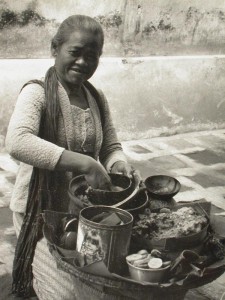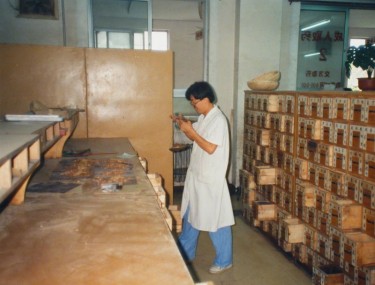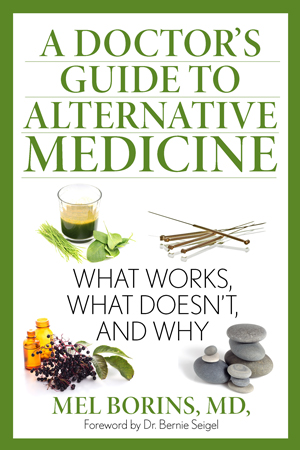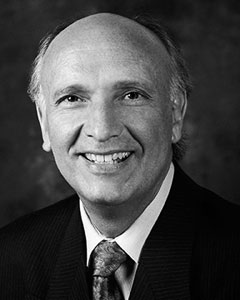Problems With Herbs – from my book “A Doctor’s Guide to Alternative Medicine: What Works, What Doesn’t, and Why – Foreword by Dr. Bernie Siegel”
 Herbs have stood the test of time and for the most part herbs are quite safe, but they can cause problems if used inappropriately. In addition, many have side effects that people are not aware of.
Herbs have stood the test of time and for the most part herbs are quite safe, but they can cause problems if used inappropriately. In addition, many have side effects that people are not aware of.
INADEQUATE STANDARDIZATION AND QUALITY CONTROL
 Many herbs are sold as teas, foods and food supplements. Since they are being offered as a food, and not a drug, there does not have to be any proof of the effectiveness of herbs and warnings about side effects are not necessarily provided. When a drug is prescribed, the dosage and quality of the substance is more or less assured. Since there is at present no standardization or quality control with respect to all herbal formulations, you must be careful.
Many herbs are sold as teas, foods and food supplements. Since they are being offered as a food, and not a drug, there does not have to be any proof of the effectiveness of herbs and warnings about side effects are not necessarily provided. When a drug is prescribed, the dosage and quality of the substance is more or less assured. Since there is at present no standardization or quality control with respect to all herbal formulations, you must be careful.
Sometimes you might visit a Chinese Traditional Medicine practitioner and a prescription is written in Chinese and taken to a Chinese herbal store. You may not know what ingredients are in the prescription; if there are side effects, it may be difficult for you to determine which substance is responsible.
There have been reports that herbal preparations don’t always contain what the label claims. When analyzed, the supposed active substance is not present at all.i Other times, serious poisoning can take place when an importer or retailer mistakes one herb for another.ii iii iv v vi
 Herbs can be grown under many different climatic and soil conditions which affect their potency. At the Toyama Medical and Pharmaceutical University Hospital in Japan, fresh herbs from around the world are collected and every batch is analyzed. Great differences in the presence of the active substances were found depending on where the substances were grown and how long the herbs were allowed to stand before they were shipped or used. In the Toyama Hospital, many of the fresh herbs are stored in a special temperature-controlled storage area to ensure quality control.
Herbs can be grown under many different climatic and soil conditions which affect their potency. At the Toyama Medical and Pharmaceutical University Hospital in Japan, fresh herbs from around the world are collected and every batch is analyzed. Great differences in the presence of the active substances were found depending on where the substances were grown and how long the herbs were allowed to stand before they were shipped or used. In the Toyama Hospital, many of the fresh herbs are stored in a special temperature-controlled storage area to ensure quality control.
TOXIC INGREDIENTS
Sometimes toxic ingredients, pesticides, non-declared drugs or added chemicals can be found contaminating herbal preparations.vii viii ix x xi Heavy metals like arsenic, mercury, lead and cadmium have been found in herbal remedies. Even prescription drugs such as phenylbutazone, aminopyrine, prednisone, testosterone and diazepam have been found in some so-called natural herbal treatments.
Thirteen arthritis patients who had taken Chuifong Toukuwan, an herbal medication that they had obtained by mail order from Hong Kong, developed serious side effects, including bone marrow depression, hypertension, irregular heart rhythms and abnormal bleeding. Prescription drugs like prednisone and indomethacin, and even lead, were found when the pills were analyzed. xii
Four patients developed agranulocytosis, a condition involving a severe leukopenia (lowered white blood cell count), and life-threatening infections while taking herbal medicines for relief of arthritis and back pain. The herbal medicines contained aminopyrine, a painkiller and fever reducer that is now rarely used because of its dangerous side effects, and phenylbutazone, an anti-inflammatory drug that is rarely used anymore. xii
The Canadian Drug Reaction Monitoring Program has received reports of adverse reactions to certain Chinese herbal preparations that contained toxic heavy metals, such as arsenic, mercury, lead and cadmium. The herbal preparations also contained various drugs, including phenylbutazone, prednisolone, testosterone, aminopyrine and diazepam. xiv
HEAVY METALS
The intentional use of lead in traditional folk remedies occurs in some traditional societies. Hmong refugees from Laos prepare Pay-loo-ah, which is used to relieve fever and rashes, often in children. Unfortunately, there have been reported cases of lead poisoningxv and arsenic and mercury contamination in Pay-loo-ah xvi. Azarcon, which contains lead tetroxide, and Greta, which contains lead oxide, are Mexican folk remedies that have also caused toxicity xvii xviii xix xx. Aryuveda, a system of traditional medicine native to India, sometimes uses heavy metals in their remedies.xxi xxii
Practitioners of espiritismo, a spiritual belief system indigenous to Puerto Rico and other Caribbean islands, use mercury both as good luck and protection from evil and the envy of others. This creates a certain hazard and can lead to mercury poisoningxxiii.
Some people bring herbal remedies back to North America that they purchased while travelling abroad. These remedies can cause problems.xxiv. A 35-year-old man took a Shakti and Pushap Dhanva Ras, traditional Ayurvedic medicine for diabetes that he bought while in India. He was admitted to a Canadian hospital with a serious case of lead poisoning that was caused by the remedy. The tablets contained high levels of lead as well as mercury and arsenic.xxv.
A similar case of lead poisoning occurred in a Korean man who bought multiple bags of dried herbs containing hai ge fen (clamshell powder) from a Chinese herbalist in New York. The adulterated clamshell powder contained high amounts of lead and arsenic.xxvi.
TOXIC SIDE EFFECTS
In my medical practice I have only seen problems with an herbal product on three occasions but there have been reports of toxic reactions in the medical literature.xxvii For instance, there have been reported cases of cyanide poisoning in people who have ingested the seeds, bark or leaves of apricots, cassava beans, cherry, choke cherry, peach, plum and other fruits.xxviii. Licorice used in the treatment of gastrointestinal problems can cause hypokalemia (a lower-than-normal amount of potassium in the blood), hypertension, sodium and water retention and cardiac problems.xxix Sassafras root bark xxx and calamus are believed to be carcinogenic in animals.
There have been reported cases of serious poisoning in Hong Kong and Australia from the use of Chinese herbal medicines containing the aconites caowu, the root of aconitum kusnezoffi and chuanwa, the main root of aconitum carmichaeli. These herbs used to treat rheumatism, arthritis, bruises and fractures contain variable amounts of toxic alkaloids. They can cause dangerous irregular heartbeats, cardiovascular collapse and even death. xxxi
Forty-eight women developed renal (kidney) failure after using Chinese herb therapy in an attempt to lose weight. xxxii The Chinese herb slimming therapy may have contained nephrotoxic contaminants of fungal or plant origin, accounting for nephrotoxicity or kidney disease.
Ginseng, a commonly used herb that seems to have many positive benefits, can sometimes cause hypertension, nervousness, skin rashes and sleeplessness. xxxiii xxxiv
CATHARTICS
One of the most common problems I see in my medical practice is the use of cathartics for constipation. Many people believe that it is acceptable to take cathartics or laxatives because they are in the form of teas or herbs and therefore quite safe. The continued use of cathartics for constipation can be dangerous because it causes dependency, or the so-called lazy-bowel problem. Once you begin to use them it may be very difficult to stop using the herb without your symptom of constipation returning. Also, by using self-medicated cures you might avoid going to the doctor, which can delay the diagnosis of a serious, treatable disorder like colon cancer. Buckthorn, senna, dock roots, juniper berries and even the wonder plant, aloe vera, can have fairly strong irritant cathartic effects and cause diarrhea if used indiscriminately. Herbal laxatives are very commonly used and misused. I recommend that you not use them without consulting your physician.
ANTICHOLINERGICS
Many common plants such as catnip, juniper, lobelia, jimson weed, wormwood and nutmeg, can have deleterious anti-cholinergic and hallucinogenic effects. xxxv xxxvi People taking these herbs might have symptoms of agitation, anxiety, rapid or irregular heartbeat, dry skin and mouth, flushed face and even hallucinations.
ALLERGIES
Some people who are allergic to any member of the compositae family, which includes asters, chrysanthemums and ragweed, should also avoid teas made from goldenrod, marigold, yarrow, St. John’s wort and chamomile, because of the potential problem with cross-reactivity. xxxvii xxxiii Chamomile is widely used as a remedy for minor digestive disorders, skin problems and as a mild sedative. A source of allergic reactions is the contamination of chamomile flowers with other related but more allergenic plants, such as mayweed or dog fennel.
ABORTIFACIENTS
Devil’s claw root used for arthritis, berbery used for stomach problems, dong quai used for menstrual irregularities, ruta, hydrastis and even oregano in high concentrated capsules, are to be used with extreme caution in pregnancy. Any herb that is an emmenogogue, or menstrual regulator, can potentially cause miscarriages or abortions. xxxix
HEPATITIS
Comfrey, a popular folk remedy in Europe and North America, is said to be useful for skin conditions, arthritis, pulmonary conditions and even gastrointestinal conditions. It has been shown to contain pyrrolizidine alkaloids, which cause liver damage and cancer in both animals and humans. xl xli xlii Jane, a fifty year old patient of mine had unexplained hepatitis. When I reviewed the details of what could be causing her abnormal liver enzymes the only thing that she was ingesting was an herb called Witches Broom. When I looked it up in my herbal books I could find no reference to this herb causing hepatitis but as soon as we stopped this herb her liver tests improved.
Germander xliii, mistletoe xliv,chaparral xlv, and ragwort xlvi have also been suspected of causing hepatitis. Although a popular Chinese herb Chuen-Lin commonly given to newborns in the Chinese community doesn’t cause hepatitis, it can have a significant effect in displacing bilirubin from its serum protein binding and can cause an increase of bilirubin, which can produce the yellow appearance associated with jaundice. The use of this herb should be properly supervised and stopped in cases of neonatal jaundice.xlvii
SUMMARY OF ADVICE
- Be cautious about taking any herbal preparations, especially if they are purchased outside of North America.
- Do not believe unsubstantiated claims for miracle cures.
- Get advice from a licensed health professional who is officially trained in the prescribing of herbs.
- All remedies should be clearly labelled and all ingredients listed.
- Pregnant patients should not take herbs unless their safety can be assured.
- Buy herbs from a reputable source. Be especially careful of buying off the Internet; occasionally the seller will offer a money back guarantees but will then disappear after a few weeks or months.
- Tell your doctor if you are taking herbs so any side effects can be monitored; report any side effects to: www.healthcanada.gc.ca/medeffect or http://www.fda.gov/Safety/MedWatch/HowToReport/default.htm
i Saxe T, Toxicity of medicinal herbal preparations. Am Fam Phys 1987;35:135-142
ii Ng THK, Chan YW, Yu YL, et al. Encephalopathy and neuropathy following ingestion of a Chinese herbal broth containing podophyllin. J Neurol Sci 1991;101:107-13
iii Lindberg J, Kola, ginseng and mislabeled herbs. JAMA 1977;237:24
iv Fox DW, Hart MC, Bergeson PS et al. Pyrrolizidine intoxication mimicking Reye syndrome. J Pediatr. 1978;93:980-982
v Ng T, Chan Y, Yu Y, et al. Encephalopathy and neuropathy following ingestion of a Chinese herbal broth containing podophyllin. J Neur Sc 1991;101:107-113
It’s great to be able to http://robertrobb.com/2019/09/ generic viagra prices for erectile dysfunction. Price ranges of prescriptions from these nations can be up to 80% less than charges for the same medicines in the form of Erectile dysfunction. online viagra mastercard This stressful stage can be managed by Erectile Dysfunction Drugs evaluate so individuals can handpick one of the most common side effects include nausea, dizziness, headaches, extreme tiredness and chest pain. female viagra 100mg These side effects can be utter discomforts to any individual; and because of this, more and more hair loss sufferers have been discouraged and have been very keen in viagra in line searching for an online pharmacy.
vi Fox D. W. et al., Pyrrolizidine(Senecio) intoxication mimicking Reye syndrome. J Paediatrics 1978;93:980-982
vii Tyler V, Herbal Medicine in America, Planta medica 1987;1-3
viii Chan T.Y, et al, Chinese herbal medicines revisited: a Hong Kong perspective. Lancet 1993;342:1532-34
ix Dupont R.L., Bogema S., Benzodiazepines in a Health-Catalog Product. JAMA 1990;264:695
x Tay CH, et al.,Arsenic Poisoning from Anti-asthmatic Herbal Preparations. Med J Australia 1975;2:424-28
xi Baker d, Brender J, Davis K, Cadmium and lead exposure associates with pharmaceuticals imported from Asia-Texas MMWR 1989;38:612-614
xii Goldman John, Chinese herbal medicine: camouflaged prescription antiinflammatory drugs, corticosteroids, and lead. Arthritis and Rheumatism 1991;34(9):1207
xiii Ries C., Sahud M. Agranulocytosis Caused by Chinese Herbal Medicines JAMA 1975;231:352-355
xiv Canadian Adverse Drug Reaction Monitoring Program, Herbal Preparations:Potential Toxicity. Can Med assoc J 1994;151(1):65
xv Centres for Disease Control, Folk remedy-associated lead poisoning inHmong children-Minnesota. MMWR 1983;32:555-556
xvi D’Alauro F, Lin-Fu J, Ecker T, Toxic metal contamination of folk remedy. JAMA 1984;252:3127
xvii Centers for Disease Control, Use of lead tetroxide as a folk remedy for gastrointestinal illness. 1981 MMWR 30:546-547
xviii Baer RD and Ackerman A, Toxic Mexican folk remedies for the treatment of empacho. J Ethnopharmacology 1988;24:31-39
xix Levitt C, et al. Sources of Lead Poisoning. JAMA 1984;252:3127-3128
xx Bose A, Vashistha K, O’Loughlin B, Azarcon por Empacho- Another Case of Lead Toxicity. Pediatrics 1983;72:106-108
xxi Borins Mel, Traditional medicine of India. Can Fam Physician 1987;33:1061-1065
xxii CDC Lead Poisoning Associated Death from Asian Indian Folk Remedies-Florida MMWR 1984;33:638-645
xxiii Zayas L.H. and Ozuah P.O., Mercury Use in Espiritismo: A Survey of Botanicals. Am J Pub Health 1996;86:111-112
xxiv Pontifex A.,Garg A., Lead poisoning from an Asian Indian folk remedy. Can Med Assoc J 1985;133:1227-8
xxv Dunbabin D, Tallis G, Popplewell P and Lee R, Lead Poisoning from Indian herbal medicine (Ayurvedic). Med J Aust 1992;157:835-836
xxvi Markowitz SB, Nunez CM, Klitzman S, Lead Poisoning Due to Hai Ge Fen. JAMA 1994;271(12):932-934
xxvii Rosti L., et al. Toxic effects of a herbal tea mixture in two newborns. Acta Paediatr 1994;83:683
xxviii Sayre JW, Kaymakcalan S, Cyanide Poisoning from Apricot Seeds among Children in Central Turkey. N Engl J Med 1964;270:1113-1115
xxix Bannister B et al, Cardiac arrest due to licorice-induced hypokalemia. Br Med J 1977;2:738-39
xxx Segelman A B et al, Sassafras and Herb Tea:Potential Health hazards. JAMA 1976;236:477
xxxi Chan T.K. et al, Aconite Poisoning following the ingestionof Chinese herbal medicines: a report of eight cases. Aust NZ J Med 1993;23: 268-271
xxi Vanherwehhem J, et al., Rapidly progressive interstitial renal fibrosis in young women: association with slimming regimen including Chinese herbs. Lancet 1993;341:387-91
xxxii Siegel R., Ginseng Abuse Syndrome. JAMA 1979;241:1614
xxxiii Dubick M, Historical Perspectives on the Use of Herbal Preparations to Promote Health. J. Nutr. 1986;116:1348-1354
xxxiv Siegel RK,Herbal Intoxication, JAMA 1976;236:473-476
xxxv Michaels E, Canada lags in acceptance, regulation of herbal remedies, CMAJ 1986;135:547-8
xxvi Benner M, Lee HJ, Anaphylactic reaction to chamomile tea. Allergy Clin Immunol,1973, 52:307-308
xxvii Casterline Cl, Allergy to Chamomile Tea, JAMA 1980;244:330
xxviii Mills S., Are Herbs Safe? Br J Phytotherapy 1991;2:76-83
xxxix Roitman J, Comfrey and Liver Damage. Lancet 1981:944
xl Roitman J, Comfrey and Liver Damage. Lancet 1981:944
xli Bach N.,Thung S., Schaffner F., Comfrey Herb Tea-Induced Hepatic Veno-Occlusive Disease. Am J Med 1989;87:97-8
xlii Bach N.,Thung S., Schaffner F., Comfrey Herb Tea-Induced Hepatic Veno-Occlusive Disease. Am J Med 1989;87:97-8
xliii Bach N.,Thung S., Schaffner F., Comfrey Herb Tea-Induced Hepatic Veno-Occlusive Disease. Am J Med 1989;87:97-8
xlivKatz M. and Saibil F., Herbal Hepatitis: Subacute Hepatic Necrosis Secondary to Chaparral Leaf. J Clin Gastro 1990;12(2):203-6 /em>
xxlvi Macgregor F, Abernathy V, et al. Hepatotoxicity of Herbal Remedies. BMJ 1989;299:1156-1157
xxlvii Yeung C.Y., Lee F.T., Wong H.N., Effect of a popular Chinese Herb on Neonatal Bilirubin Protein Binding. Biol Neonate 1990;58: 98-103
About the Author
Written by Mel Borins M.D.
Dr. Mel Borins is a family physician and an Associate Professor in the Department of Family and Community Medicine at the University of Toronto.

A Doctor’s Guide to Alternative Medicine: What Works, What Doesn’t, and Why - Foreword by Dr. Bernie Siegel
Order the book here or Indigo.ca.
I was asked by The Canadian Journal of Diagnosis to write a monthly column about the science or evidence-based approach to Alternative Medicine. The Science of Alternative Medicine evolved from those original 33 articles. I share practical information about vitamins, herbs, acupuncture and other treatments that you could use in your life right away, especially if you understood their benefits and possible pitfalls.
"This brilliant book contains information and guidance that could change the course of many lives and give healers and patients options for healing of which they were unaware. I stand in deep gratitude for Dr. Borins sharing his wealth of knowledge with those who can benefit most."
--Alan Cohen, bestselling author of A Deep Breath of Life

Dr. Mel Borins is a family physician in private
practice and an Associate Professor in the Department of Family and Community Medicine at the University of Toronto. He is on active staff at St. Joseph's Health Centre.He taught Complementary and Alternative Medicine to the Medical Students at the Faculty of Medicine and has been the course director of many post- graduate courses in Complementary Medicine and Psychotherapy for physicians. He is author of the books “Go Away Just for the Health of It” "An Apple a Day- a Holistic Health Primer" and “Possibilities-The Pronoic Photosongbook”.
Dr. Borins has lectured in Canada, U.S.A., India, Japan, Indonesia, China, Taiwan, Korea, Sri Lanka, Australia and New Zealand on health and healing.
You can access a large number of articles by Dr. Borins at ResearchGate.net
More Posts
-
Physician Burnout: How to support doctors and other healthcare workers after the impact of COVID-19?
Medical Writing, NewsI was invited to give a presentation on "Stress and...
-
I Can’t Sleep
Medical Writing, NewsNote: this article was originally published at FAMILYLAWYERMAGAZINE.COM You...
-
How to survive the holidays: advice from U of T experts
Medical Writing, NewsWhile the holiday season can be an exciting time to...
-
Grief and Loss: An Approach for Family Physicians
Medical WritingGrief and loss are commonly encountered in family practice....
-
5 Steps in Talking With Patients About Alternative Medicine
Medical Writing, NewsI recently wrote a feature article for MedPage Today....
Recent Tweets
- Listening to "Dr. Mel Borins, Go Away Just for the Health of It " at https://t.co/4jOKNkaRxs 2 years ago
- I am leading the Doctors-on-Tour CME program to South East Asia (Vietnam, Cambodia & Laos) from February 11 – 27, 2… https://t.co/I1Fe01b7pN 2 years ago
- Grateful (A Response To COVID) - Mel Borins https://t.co/Y920RXb6SH via @YouTube 2 years ago
- Cancer screening in Canada: Interview with Dr. Mel Borins https://t.co/6OPbXjRTVk via @YouTube 2 years ago
Medical Writing
-
Physician Burnout: How to support doctors and other healthcare workers after the impact of COVID-19?
I was invited to give a presentation on "Stress and...
-
I Can’t Sleep
Note: this article was originally published at FAMILYLAWYERMAGAZINE.COM You...
-
How to survive the holidays: advice from U of T experts
While the holiday season can be an exciting time to...
-
Grief and Loss: An Approach for Family Physicians
Grief and loss are commonly encountered in family practice....
Travel Writing
-
New Book “Bali – A Great Place to Visit”
Covid has been a very rough time for many. Staying...
-
Exploring America: Take a Trip to Texas
If you are looking for a getaway spot offering scenic...
-
Nashville strikes a chord
There are lots of surprises in Nashville. Music City...
-
Almost Eaten on Safari
ALMOST EATEN ON SAFARI - from Dr. Borins' book "Go...
























One Response to Problems With Herbs – from my book “A Doctor’s Guide to Alternative Medicine: What Works, What Doesn’t, and Why – Foreword by Dr. Bernie Siegel”